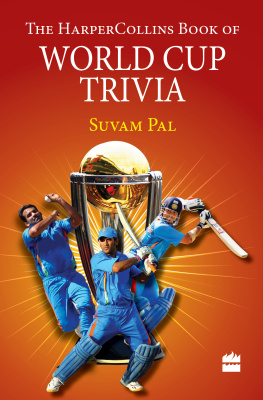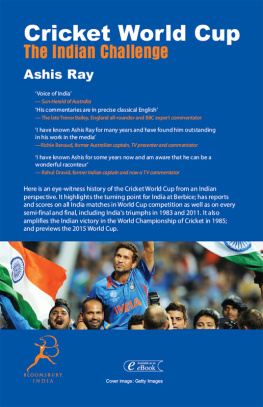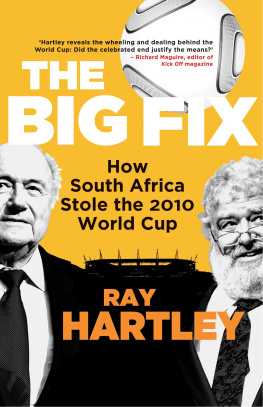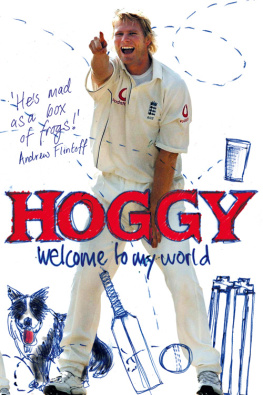For my cute and courageous wife Rituparna, who overcame
every hurdle in her way to hold my hand forever
Contents
My baptism with authorhood was solemnised just before the 2011 ICC World Cup when I made my debut with Sachin: 501 Things You Didnt Know About the Master Blaster . With M.S. Dhonis boys lifting the coveted silverware for Sachin Tendulkar in his final World Cup, it was a double delight for me, a humble chronicler of his many glories. After writing a quiz book, I considered myself as at least a half-author and carried forward my enthusiasm for trivia into another title, The Ultimate Olympic Quiz Book .
In the months that followed, a series of unprecedented developments transformed my life: I moved on from Times Now, migrated to South Africa, lock, stock and barrel, a country where two close encounters with death, denied meambitious to accomplish a coveted publishing hat-trickfor the next two years. Moreover, in a near-fatal robbery in Johannesburg in which four armed men took away everything but my life, I lost research material Id accumulated over yearseven my laptopand all the relevant documents for my forthcoming book.
On returning to India, I had to start from scratch. I wanted to start working on something fresh, and alongwith my Doha-based friend Joseph John, planned a full-fledged book on politics. We missed the bus, however, and that project unfortunately had to be aborted midway, thanks to the installation of the Narendra Modi government.
The jinx, however, was eventually broken with the countdown beginning for Indias mission down under. Ironically, I had taken a sabbatical from watching or following cricket after 2 April 2011the day Dhoni lifted the World Cupbut after almost four years of staying away from Indias most popular religion, it was time for my ghar wapsi . I padded up again and took the plunge into the treasure trove of the gentlemans game to dig out the topic for my third book. I had not only witnessed but also covered the 2011 World Cup as a television journalist. I was too young to remember anything about 25 June 1983the original red letter day in Indias cricketing history.
Unlike the World Cup of other sports like football and rugby, I have hardly found any definitive book on the history of World Cup cricket except a few India-centric masterpieces and a few juvenile quiz books with some ever-repeated, clichd trivia.
Therefore, to satisfy my thirst for knowledge about the glorious past of the mega event and to disseminate it among cricket fans, I decided to attempt writing its historyor the highlights, if you maythrough informative trivia, lesser-known factoids, mindboggling statistical highlights, not-so-run-of-the-mill quizzes and vignettes of innumerable magic moments of the quadrennial jamboree. While digging out these nuggets, I tried my best to leave no stone unturned and minutely looked into virtually every minor aspect and statistical detail of each and every World Cup game since its inception: the first game between England and India at Lords in 1975.
I hope this book manages to resurrect the die-hard cricket fan in you, just as it did for me.
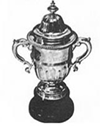
A PIONEERING PROPOSAL SHOT DOWN
Benjamin Gilbert Brocklehurst, popularly known as Ben, had served in the British Army during the second world war and subsequently when he became the captain of Somerset, he was one of the last amateur captains in county cricket. A farmer by profession, he later worked for the magazine, The Cricketer, before buying it. But Brocklehurst is also remembered for being the one who originally came up with the revolutionary idea of hosting a mega event like the World Cup.
With his wife Belinda, he conceptualized and was running several popular competitions in England, including The Cricketer Cup, the National Village Cricket Championship, the Lords Taverners Colts Trophy, the Company Cup, the European Cup and the Oxford Cricketer Cup in the 1960s and early 1970s. It was during that time Brocklehurst came up with the idea of a multi-nation tournament be played in 1972. His plan was to organize a twenty-one-match event in September 1972, featuring the six Test-playing nations of that eraEngland, Australia, India, Pakistan, West Indies and New Zealandalong with South Africa and a Rest of World team. Ironically, the Marylebone Cricket Club (MCC) shot down the proposal calling it too commercial.
WOMEN SHOW THE WAY
Womens cricket may not be as popular as the mens game but when it comes to the World Cup, its they who showed the way. Two years before the gentlemen played their first World Cup games, the ladies were already taking guard at the crease. A well-known promoter of womens cricket in the Caribbean islands in the late 1960s and 1970s, Jack Hayward, bankrolled the first Womens World Cup with 40,000 pounds and the lovely silverware. Hosts England, led by their legend Rachael Heyhoe-Flint and powered by the extraordinary exploits of Enid Bakewellshe scored centuries in both the opening game and the final, underlined their supremacy by beating Australia in the final of the seven-team tournament, also featuring New Zealand, Jamaica, Trinidad & Tobago, International XI and Young England.
Q. The millionaire sponsor of the first Womens World Cup, Jack Hayward later became the chairman and owner of which English Premiership club after buying the club in May 1990 for 2.1 million? A. Wolverhampton Wanderers |
BIRTH OF A BLUE RIBAND EVENT
Way back in 1912, there was a futile effort to stage a kind of world championship. The triangular Test series involving the premier Test-playing nationsAustralia, England and South Africafailed to take off, courtesy poor weather. However, sixty-three years later, a world event was eventually staged although with the shorter format of the gentlemans game. Four years and eighteen matches since the first-ever limited overs match, played between England and Australia at the Melbourne Cricket Ground on 5 January 1971, the World Cup became a reality.
The Prudential Insurance Company pumped in a whopping 1,00,000 to bag the naming rights for the fifteen-day event, featuring eight teams and comprising of fifteen games across six different venues. The six Test playing nationsEngland, Australia, West Indies, India, Pakistan and New Zealandwere accompanied by two non-Test playing invitees, Sri Lanka and East Africa, at the jamboree held from 7 June to 21 June.
AN UNTYPICALLY BRITISH SUMMER
The weather gods played a stellar role in making the maiden World Cup a hugely successful one. Just five days before the start of the much-anticipated event, a county game was stopped at Buxton in Derbyshire due to snow while another match in Essex was delayed because of biting cold. But the typical grim weather of the English summer didnt play spoilsport in the fifteen-day long competition. All the matchesone on each daywere played without any divine intervention and not a single ball was lost due to bad weather in the entire tournament.
AN INDIAN BEGINNING TO THE WORLD CUP
After England elected to bat, opener John Jameson took guard to face the first delivery in the World Cup history. His opening partner Dennis Amiss was at the non-strikers end when Indian medium pacer Madan Lal bowled that historic delivery. Jameson also became the first batsman to be dismissed in a World Cup game, by Mohinder Amarnaththe first bowler to bag a World Cup wicket. Interestingly, Jameson has a strong Indian connection as he was born in the Byculla locality of Mumbai (then Bombay) and studied in the citys Cathedral and John Connon School before joining Sherwood College in Nainital. A few years later, the young student migrated to England for good and subsequently became a Test cricketer for his new country. Incidentally, both his sports enthusiast parents were also born in India and his hockey-loving father, who had officiated as an umpire in the 1964 Tokyo Olympics and 1968 Mexico Olympics in hockey, used to work with the Bombay Police.
Next page
